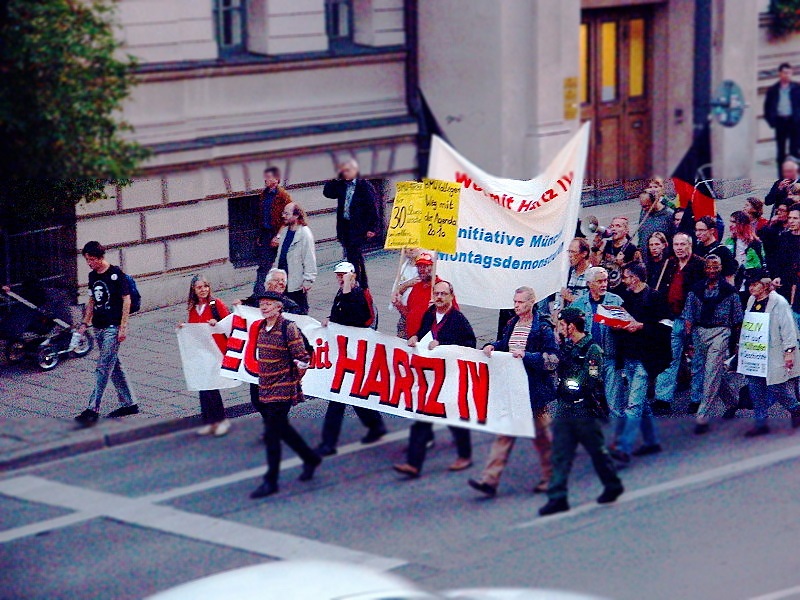The activating labour market reforms of the German government at the beginning of the 21st century (Agenda 2010) were considered to be successful in reducing unemployment, especially long-term unemployment. But the majority of the media and also the majority of the German population consider this reform as socially unfair. While long-term unemployment fell from 1.7 to now under one million, people still believe, Hartz IV made Germany poorer.
A new empirical study tells a different story. The introduction of Hartz IV not only reduced the amount of unemployment aid after 12 month of unemployment, thus forcing people on the dole to search a new job earlier and with more dedication, it also increased the standard rate of welfare aid. The Cologne Institute for Economic Research made a micro-economic simulation and compared the status quo today with the hypothetical situation without Hartz IV.
Regarding Germany as a whole the portion of people profiting from Hartz IV of needy households is greater than the portion of welfare recipients, who would benefit more from the old system of social welfare and unemployment aid. In East Germany the portions of the reform losers and the reform winners are nearly the same. Regarding the age of the different recipients, younger persons benefit more from Hartz IV, while those with an age of 55 years and older are the losers. Especially the poorer parts of the population and low income groups profited notably from the Hartz IV-reforms.
While unemployment and long-term unemployment decreased considerably, no significant negative distributive effects occurred.



